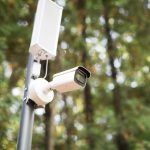In the evolving field of medical imaging, photoacoustic imaging stands out as a non-invasive, state-of-the-art technique that shows immense promise. It’s a revolutionary tool that, when combined with ultrasound, can provide vital anatomical, functional, and molecular information. This innovative technology is proving to be a game-changer, especially in the early diagnosis of cancer. Its unique ability to detect suspicious abnormalities at the earliest stages could transform the way we approach cancer diagnosis and treatment.
Understanding Photoacoustic Imaging
Before we delve into the potential of photoacoustic imaging, let’s grasp what this technology is all about. Photoacoustic imaging is a biomedical imaging modality that combines ultrasound and laser-induced photoacoustic signals to generate high-resolution images. This hybrid technique makes it possible to look much deeper into tissues compared to conventional imaging methods, offering a window into the body’s inner workings at a cellular level.
Dans le meme genre : What’s the Latest on AI-Enhanced Virtual Reality for Immersive Travel Experiences?
In the realm of medical imaging, the clarity and depth of image are critical. Photoacoustic imaging ticks both these boxes, offering high-resolution images and unparalleled depth of penetration, thanks to the combination of optical and ultrasound imaging. The technique involves exposing tissues to short laser pulses. The absorbed light is converted into heat, leading to a transient thermoelastic expansion that generates ultrasound signals. These are then detected by an ultrasound transducer to form a high-resolution image of the tissue.
Role in Cancer Detection
Now that we have an understanding of photoacoustic imaging, let’s explore its potential in cancer detection. In the face of cancer, early detection is key. Unfortunately, many current methods of detection, such as mammography or colonoscopy, can be invasive, uncomfortable, and may not always detect cancer at its nascent stages. Here’s where photoacoustic imaging makes a difference.
Dans le meme genre : How Can Smart Fabric Technology Monitor Vital Signs for Early Disease Detection?
Due to its ability to provide high-resolution, real-time images of the tissue, photoacoustic imaging can detect suspicious changes at a much earlier stage than other imaging methods. It can identify changes in the size, shape, and even the biochemical and biophysical properties of cells – all of which can be indicative of cancer. This type of information is invaluable in diagnosing cancer at a stage where it can be more effectively treated and potentially cured.
Advantages Over Other Imaging Techniques
Photoacoustic imaging’s efficacy in cancer detection can be owed to several advantages it holds over other imaging techniques. First, it is non-invasive, causing minimal discomfort to patients. This contrasts sharply with techniques like biopsies that necessitate the removal of tissue samples for examination.
Secondly, photoacoustic imaging has superior spatial resolution and imaging depth. Unlike techniques such as MRI and X-ray, which can struggle with imaging deep tissues clearly, photoacoustic imaging can penetrate up to several centimeters below the skin surface, with a resolution that does not degrade with depth. This allows for a more comprehensive view of the tissue, including its vascular network and oxygenation levels – vital indicators when looking for signs of cancer.
Future Directions for Photoacoustic Imaging in Cancer Diagnosis
Despite its numerous advantages and promising results, photoacoustic imaging is not without its challenges. One of the biggest hurdles is the lack of standardized protocols and guidelines for its use in clinical settings. Additionally, the technology is sophisticated and requires expert handling and interpretation of the images.
However, as we continue to explore and refine this technology, it has the potential to become a key player in cancer diagnosis. Its ability to detect changes at a cellular level, and at earlier stages, has far-reaching implications for the future of cancer treatment. This could lead to faster, more effective treatments and a much higher survival rate among cancer patients.
In conclusion, while the use of photoacoustic imaging in early cancer diagnosis is still in its exploratory stages, its potential is undeniable. As we continue to unlock the power of photoacoustic imaging, it’s likely to become a major player in the fight against cancer, revolutionizing not just how we detect this deadly disease, but also how we treat it.
Photoacoustic Imaging and Patient Comfort
Examining the benefits of photoacoustic imaging, a crucial aspect that stands out is patient comfort. In traditional diagnostic methods, the discomfort or invasive nature of the procedure often discourages regular check-ups and early detection. However, with photoacoustic imaging, this barrier is effectively removed.
Being a non-invasive procedure, photoacoustic imaging eliminates the need for any surgical intervention. It uses laser and ultrasound to generate detailed images of the tissue, without causing any physical discomfort to the patient. That means, unlike other imaging techniques such as mammography, it involves no radiation exposure or the need for injections of contrast agents, thus minimizing potential side-effects or risks.
Moreover, the procedure is quick, usually completed within minutes, and typically requires no prior preparation. This convenience factor, combined with the non-invasive nature of the technique, could encourage more people to seek early diagnosis, thereby increasing the chances of successful cancer treatment.
Additionally, photoacoustic imaging can provide real-time imaging, allowing physicians to monitor the progress of a treatment or to guide interventions. This capacity to offer immediate feedback could prove vital in oncology, where treatment strategies often need to be adjusted based on the response of the tumor.
Conclusion: The Promise of Photoacoustic Imaging in Early Cancer Diagnosis
In conclusion, photoacoustic imaging holds immense promise in the realm of early cancer detection. Its unique combination of high-resolution imaging, depth of penetration, and non-invasive nature make it a powerful tool in the fight against cancer.
Indeed, it’s not just about early cancer detection, but about creating a diagnostic experience that is less stressful and more patient-friendly. The comfort and convenience it offers to patients can potentially encourage more people to opt for early screening, thereby increasing the chances of successful treatment.
Despite facing some challenges, such as the necessity for standardized protocols and expert handling, the potential of this technology is undeniable. As we continue to refine and perfect this technique, we can expect photoacoustic imaging to play an increasingly significant role in our battle against cancer.
The future is promising. As we move forward, every step we take in harnessing the potential of photoacoustic imaging means a stride towards a world where cancer can be detected and treated at its earliest stages, improving survival rates and quality of life for cancer patients. The journey may be complex, but the goal is clear and worth striving for.











